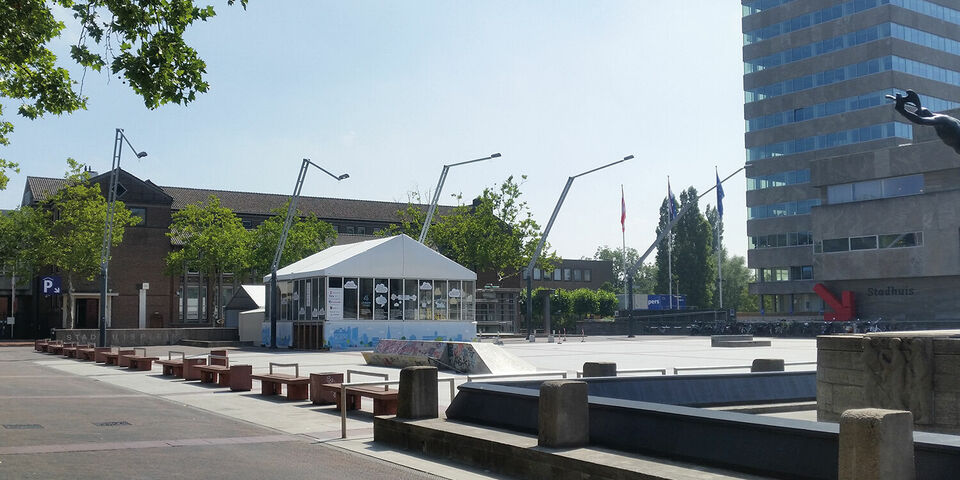Air quality in Eindhoven significantly improved with 'Lungs of the City’
The air quality in many parts of Europe and the Netherlands does not meet the advisory values of the World Health Organization (WHO). However, the smart integration of air purification technology at polluting hotspots in public spaces can substantially reduce fine dust concentrations in cities. This is the conclusion of the TU/e, ENS Clean Air, Air Liquide, and the municipality of Eindhoven from the pilot project 'Lungs of the City', in which the effect of air purification systems in underground parking garages was measured in the center of Eindhoven.
Eindhoven has been pursuing an active policy to improve air quality for many years. It was therefore a logical choice in 2017 for the city center to serve as a living lab for research into the so-called 'Lungs of the City' approach. In this concept, infrastructural facilities and buildings such as a parking garage, a tunnel, a public transport station, or street furniture act as an air-purifying 'Lung in the City', with the central aim of reducing particulate matter concentrations in places where high concentrations of particulate matter and high levels of exposure converge – the so-called hotspots.
Air-purifying element
In the pilot project, a temporary test installation was placed in the town hall square in Eindhoven. An air purification unit removed particulate matter from the ventilation air of the parking garage under the square and then emitted the purified air in the vicinity of the square. Air quality measurements were then taken around the square, which checked for the concentration of particulate matter and also accounted for weather conditions.
The results, which have just been released, demonstrate conclusively the positive effect of the installation on air quality according to project manager Roel Gijsbers of ENS Clean Air. "The local reduction of particulate matter concentrations turned out to be very high. We saw that the purified air from the parking garage even contains less particulate matter than the air above the ground normally does. This makes the garage a net air-purifying element in the city."
Furthermore, the measurements showed, among other things, that the local particulate concentrations differ greatly from one measurement location to another as a result of building density, weather conditions, and local traffic intensity.
High-resolution computer models were also developed that can virtually determine the effects of air purification interventions. In the report that has just been delivered, the parties combine all the insights gained from the concept and offer application recommendations and a cost-effectiveness study.
Lower health risk
According to the project partners, the project demonstrates that the ‘Lungs of the City’ approach is a technically and financially feasible strategy that has been shown to reduce particulate matter exposure. "Using established calculation methods, we have shown that the health risk can be significantly lower as a result of the measures," says Gijsbers.
‘Lungs of the City’ can be integrated into the urban infrastructure in many ways, according to the parties involved. Gijsbers: "Worldwide, many similar projects and impact studies are currently being conducted on active air purification technology in traffic-intensive areas, such as next to a highway, at the exit of a highway tunnel, in narrow city streets (street canyons), but also in train and subway stations and bus terminals."
Self-cleaning city
The concept could therefore be an effective addition to national and regional air quality policies, Gijsbers believes. "To prevent harmful emissions, tackling the local sources of emissions is most effective. However, most particulate matter comes from outside the city and reducing local emissions has no impact on that. Smartly integrated active air purification treats both local emissions and background concentrations."
With the approach and new knowledge from the ‘Lungs of the City’ project, the parties believe they are adding an important new tool to the toolkit towards achieving sustainability and improving the urban environment. Gijsbers: "The city of the future can be self-cleaning, and in Eindhoven, the first steps have been taken towards this."



Discussion